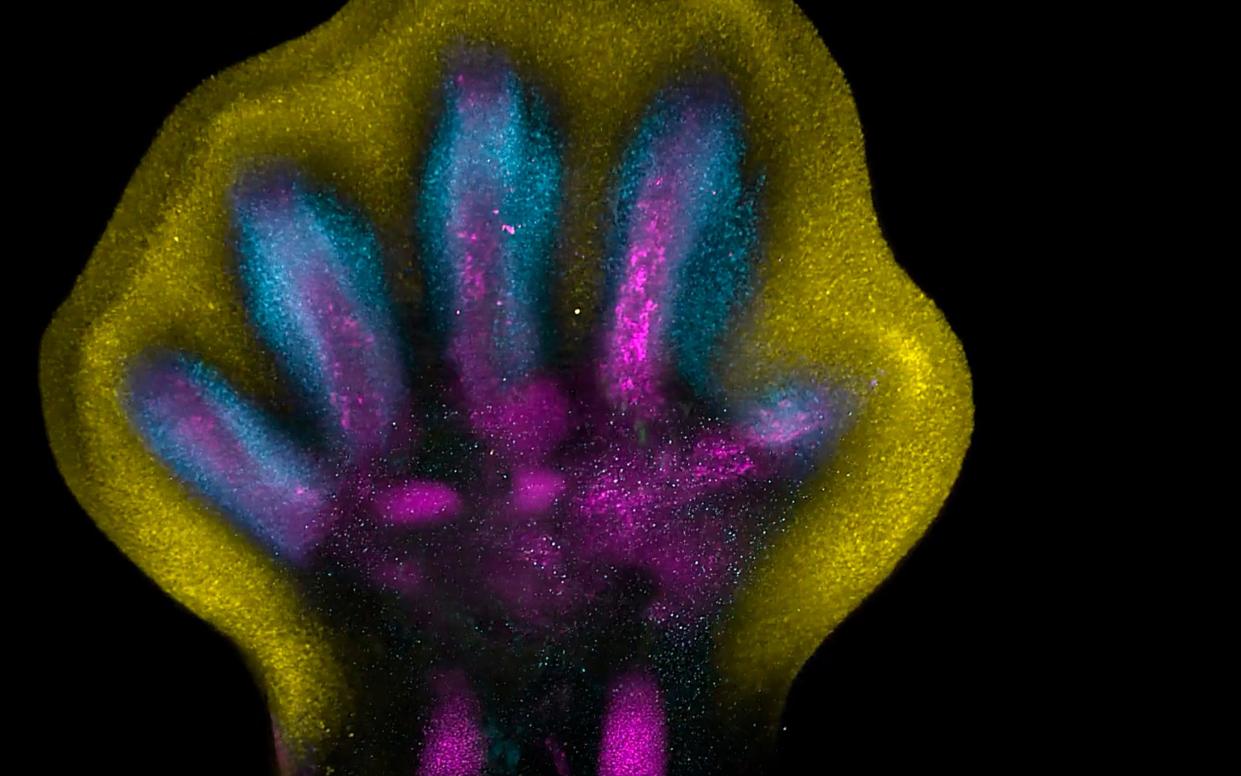Scientists finally put their finger on the fascinating way our digits are formed

- Oops!Something went wrong.Please try again later.
Fingers are formed from a blob of tissue that is “chiselled away” in the womb to reveal individual digits, a study has found.
Rather than growing from five stumps, the study found some tissue formed the foundations of the fingers, while other cells around them were eventually discarded to make the spaces in between.
Development of fingers and toes is a process that occurs rapidly between weeks five and nine of pregnancy.
Previous studies in animals suggested there was a mechanism in which skin retreated into the gaps between bones to leave behind the five components of a foot or hand. However, this had never been seen in humans.
Scientists from Wellcome Sanger, near Cambridge, and Sun Yat-sen University in China, used foetal tissue from Addenbrookes’s Hospital in Cambridge that was between five and nine weeks post-conception.
Certain genes were coloured with glowing tags and this revealed that genes IRX1 and SOX9 gather in five pillars that go on to form the fingers. However, gene MSX1, which is a sign of immature cells, occupies the spaces in between.
The study found that the tissue of the fingers takes shape between weeks five and nine of pregnancy.
‘Like watching a sculptor at work’
In around week seven, the tissue between the fingers is killed off to create 10 independent digits.
“It is like watching a sculptor at work, chiselling away at a block of marble to reveal a masterpiece,” said Professor Hongbo Zhang, senior author of the study from Sun Yat-sen University in Guangzhou.
“In this case, nature is the sculptor, and the result is the incredible complexity of our fingers and toes.”
The project, part of the Human Cell Atlas initiative to learn more about all cells in the human body, also sheds light on congenital limb issues, where people are born with shortened fingers, extra fingers or webbed hands.
Dr Sarah Teichmann, senior author of the study from the Wellcome Sanger Institute, and co-founder of the Human Cell Atlas, said: “For the first time, we have been able to capture the remarkable process of limb development down to single cell resolution in space and time.
“Our work in the Human Cell Atlas is deepening our understanding of how anatomically complex structures form, helping us uncover the genetic and cellular processes behind healthy human development, with many implications for research and healthcare.”
The study is published in Nature.

